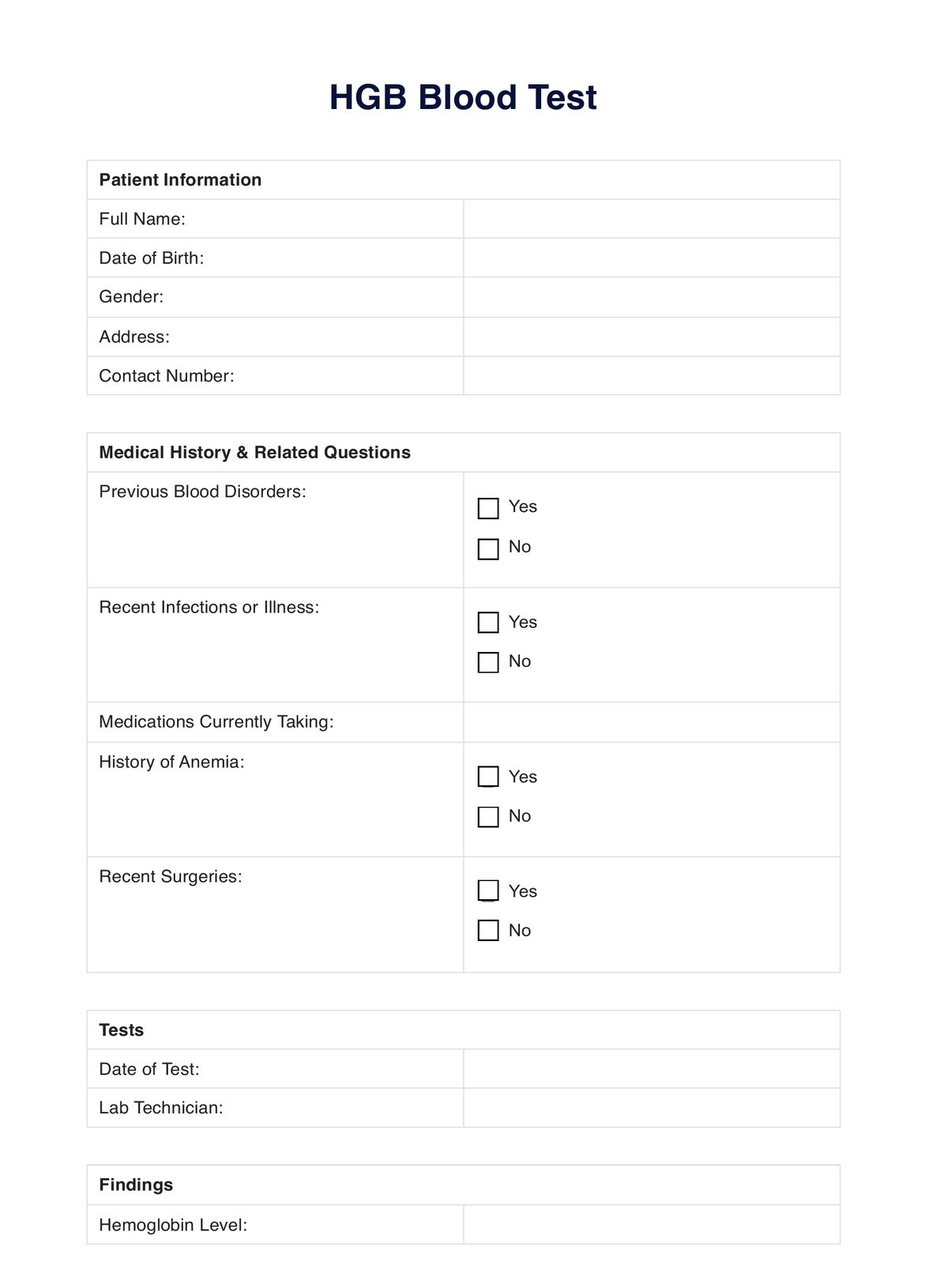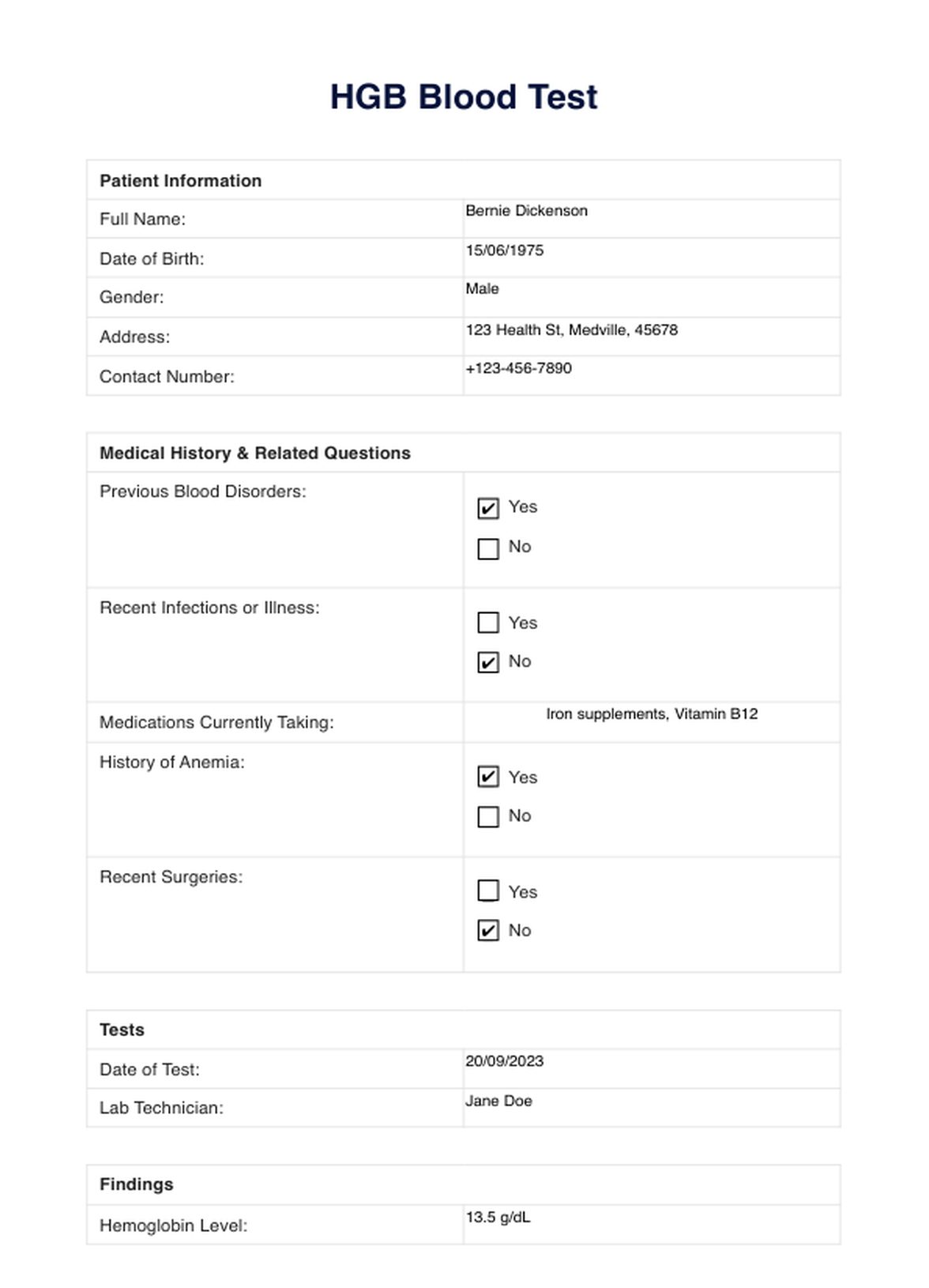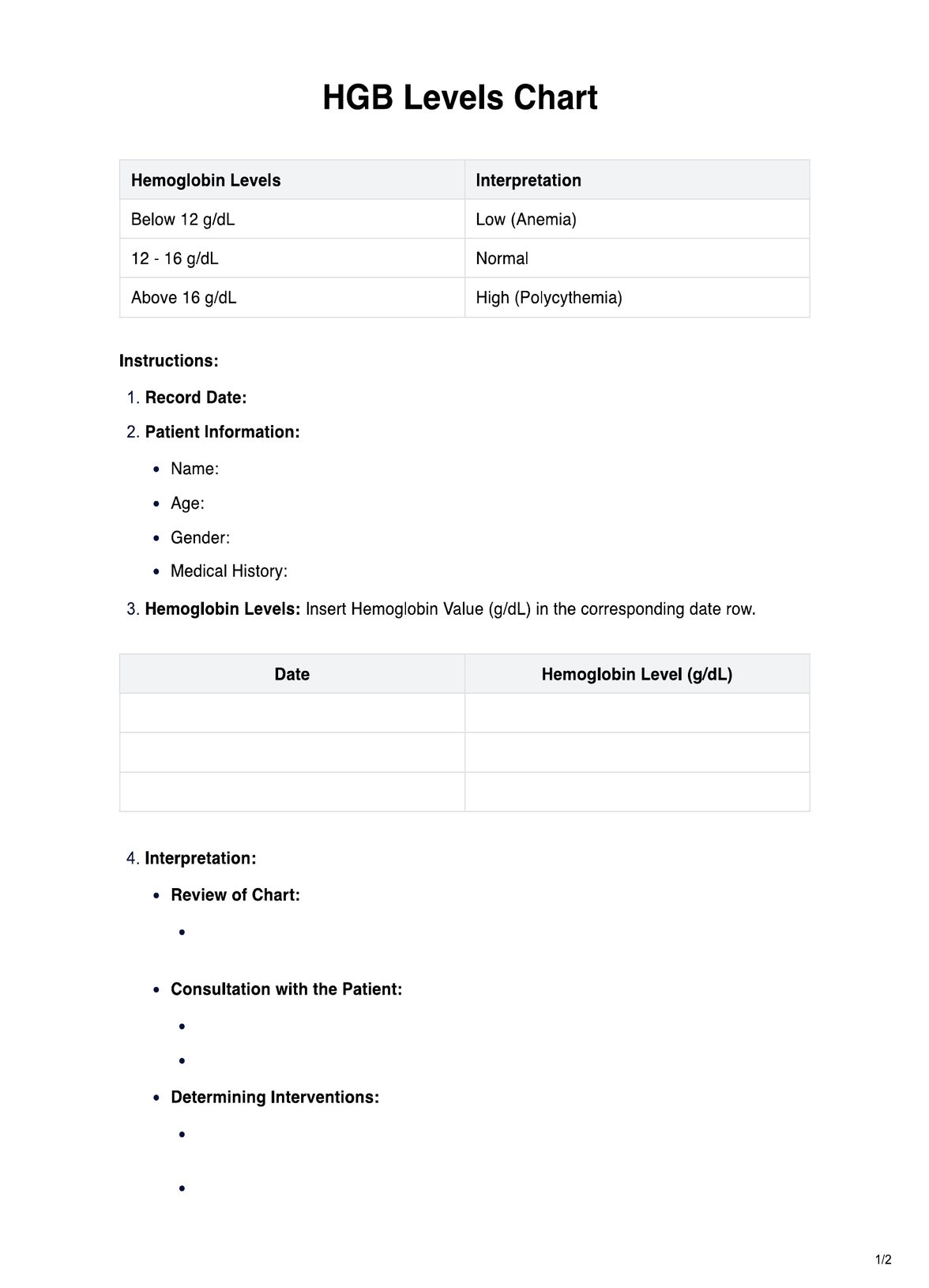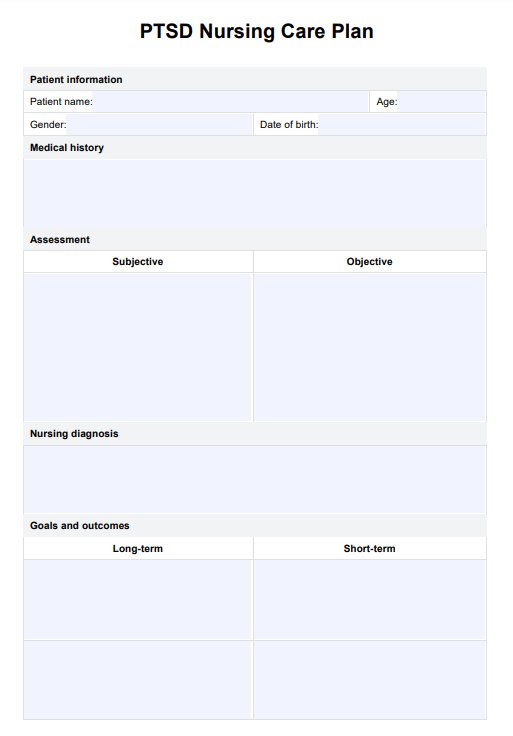HGB Blood Test
Dive into our comprehensive guide on the HGB Blood Test. Understand its importance, learn how to use it, & discover why Carepatron is the best platform.


What Is An HGB Blood Test?
In the vast realm of medical diagnostics, the HGB Blood Test stands as a cornerstone. But what exactly is it? HGB, or Hemoglobin, is a protein found in red blood cells responsible for transporting oxygen throughout the body. The HGB Blood Test, therefore, measures the amount of hemoglobin in a specific blood volume, providing crucial insights into a patient's overall health.
Why is this test so vital? Hemoglobin levels can indicate a range of health conditions. Low levels suggest anemia, a condition where the body doesn't have enough red blood cells to transport oxygen effectively. On the other hand, high levels could indicate polycythemia, a situation where the body produces too many red blood cells. Both scenarios can have significant implications for a patient's well-being.
For healthcare professionals, understanding the nuances of the HGB Blood Test is paramount. It's not just about numbers on a report; it's about piecing together a holistic view of a patient's health. With the right tools, like Carepatron's , interpreting and managing these results becomes a seamless task, ensuring that patients receive the best care possible.
In this guide, we'll delve deeper into the HGB Blood Test, its significance, and how healthcare professionals can effectively utilize it in their practice. So, whether you're a seasoned practitioner or just starting, this guide is tailored for you.
HGB Blood Test Template
HGB Blood Test Example
How To Use the HGB Blood Test
The Hemoglobin (HGB) Blood Test is a crucial diagnostic tool for assessing the amount of hemoglobin in a patient's blood, indicating conditions like anemia, polycythemia, and other blood disorders. Here's a step-by-step guide for healthcare professionals:
Preparing the Patient
- Inform the patient about the purpose and procedure of the test.
- Ensure the patient is comfortable and relaxed to prevent muscle tension during the blood draw.
- Ask the patient about any medications or supplements they are currently taking, as some can affect hemoglobin levels.
Drawing the Blood Sample
- Choose a suitable vein, usually on the inside of the elbow or back of the hand.
- Clean the area with an antiseptic wipe.
- Insert a sterile needle into the vein and draw a small amount of blood into a collection tube.
Analyzing the Sample
- Label the sample with the patient's details.
- Send the sample to the laboratory for analysis.
- The lab will measure the hemoglobin in the blood sample using automated machines.
Interpreting the Results
- Compare the patient's hemoglobin level with the standard reference range for age, gender, and health condition.
- Consider the patient's medical history, medications, and other test results when interpreting the findings.
In conclusion, the HGB Blood Test is a straightforward procedure but requires careful preparation, execution, and interpretation to ensure accurate and meaningful results.
When Would You Use This Form?
The HGB Blood Test is a fundamental tool in the arsenal of healthcare professionals. It provides crucial insights into a patient's health, especially concerning their blood's oxygen-carrying capacity. But when exactly is the right time to utilize this form?
- Routine Health Check-ups: Like checking blood pressure or cholesterol, the HGB Blood Test is often a standard component of regular health screenings. It helps in monitoring general health and detecting any potential disorders early on.
- Symptoms of Anemia: If a patient presents symptoms such as fatigue, paleness, or shortness of breath, an HGB test can help determine if they have anemia, a condition where the blood lacks enough healthy red blood cells.
- Monitoring Chronic Conditions: For patients with chronic conditions like kidney disease or heart disease, regular HGB tests can help monitor the situation and guide treatment.
- Before and After Surgery: To ensure patients have enough hemoglobin to withstand surgical procedures and recover effectively afterward.
- Pregnancy: It's standard for pregnant women to undergo HGB tests to ensure they don't develop anemia during their pregnancy, which could affect both mother and baby.
In essence, the HGB Blood Test form is a versatile tool that caters to various medical needs, ensuring that patients receive the best care possible based on accurate and timely information.
What do the Results Mean?
Interpreting the results of an HGB Blood Test is crucial for a comprehensive understanding of a patient's health. Here's a brief overview:
- Normal Range: As mentioned in the report, the normal range varies based on age, gender, and certain conditions like pregnancy. Being within this range indicates that the blood has an adequate number of red blood cells.
- Below Normal: A result lower than the standard range suggests anemia. This could be due to various reasons, including nutritional deficiencies, chronic diseases, or bone marrow disorders.
- Above Normal: A higher-than-normal result could indicate polycythemia, in which the body produces too many red blood cells. This could be due to living at high altitudes, smoking, or certain bone marrow conditions.
- Significant Fluctuations: Any drastic change in HGB levels over a short period should cause concern and require further investigation.
While the HGB Blood Test provides valuable data, it's the interpretation of these results in the context of the patient's overall health and medical history that genuinely matters. Always consult with a healthcare professional for a comprehensive understanding.
Research & Evidence
The Hemoglobin (HGB) blood test is a cornerstone in the medical field, especially in the diagnosis and monitoring of anemia and other related conditions. Its significance is deeply rooted in clinical practice and has been the subject of numerous research studies.
One of the recent studies highlighted the clinical characteristics of hiatal hernia with anemia, emphasizing the correlation between anemia and various clinical characteristics. The study found that elderly patients, those with disorders of the spine (kyphosis and scoliosis), and those with type IV hiatal hernia were more likely to have anemia. This research underscores the importance of the HGB test in diagnosing and monitoring anemia in various clinical scenarios.
Another study investigated the prognostic significance of red blood cell distribution width (RDW) and other red blood cell parameters in patients with glioblastoma. The study found that pretreatment RDW was a superior prognostic predictor of clinical outcomes in these patients, emphasizing the importance of the HGB test and other red blood cell parameters in predicting patient outcomes.
Furthermore, a study on COVID-19 patients revealed that those admitted to the intensive care unit (ICU) had lower initial HGB levels than those outside the ICU. The prevalence of anemia was higher in ICU patients, and anemic ICU patients had a higher mortality rate. This research highlights the significance of the HGB test in assessing the severity and prognosis of COVID-19 patients.
References
- Yasutaka Nakanishi et al. (2022). 323. CLINICAL CHARACTERISTICS OF HIATAL HERNIA WITH ANEMIA AND SIGNIFICANCE OF SURGICAL REPAIR.
- Ruo-fei Liang et al. (2017). Significance of Pretreatment Red Blood Cell Distribution Width in Patients with Newly Diagnosed Glioblastoma.
- Abdulrahman A. Algassim et al. (2020). Prognostic significance of hemoglobin level and autoimmune hemolytic anemia in SARS-CoV-2 infection.
Commonly asked questions
Carepatron prioritizes data security. All patient information, including HGB test results, is encrypted and stored securely, ensuring confidentiality and peace of mind.
Absolutely! Carepatron's platform is versatile, allowing integration of various lab results ensuring comprehensive patient care.
Carepatron's telehealth feature allows healthcare professionals to consult with patients remotely, discuss HGB test results in real time, and provide immediate feedback, ensuring timely interventions.















































































































